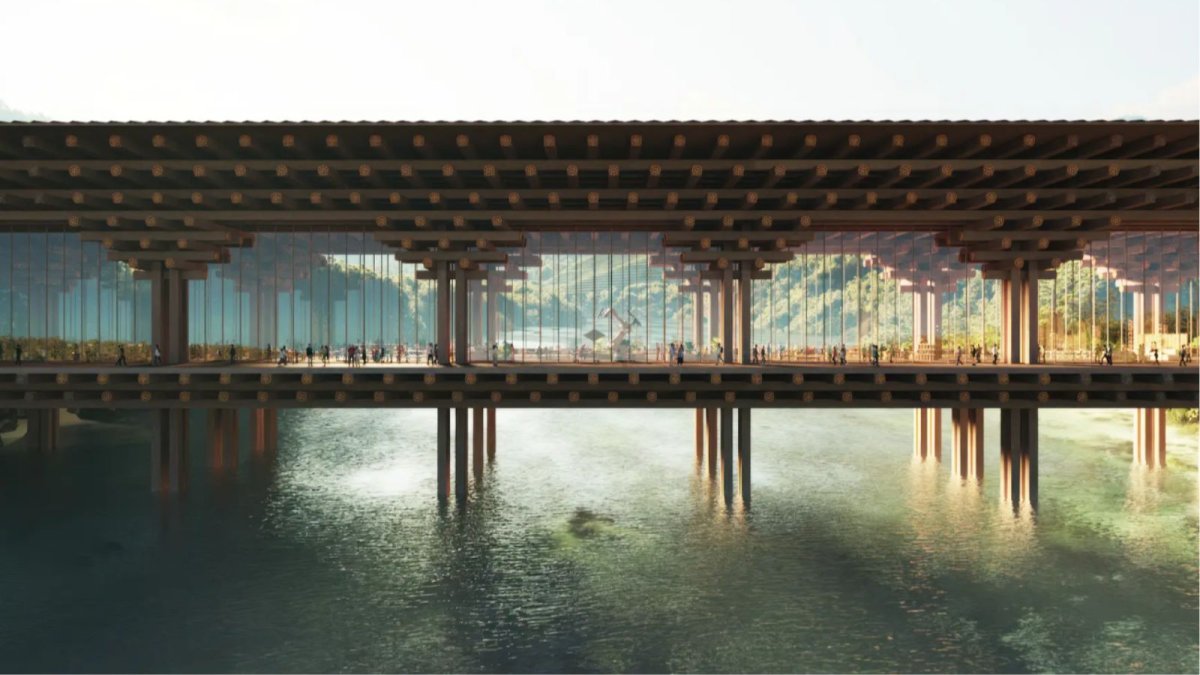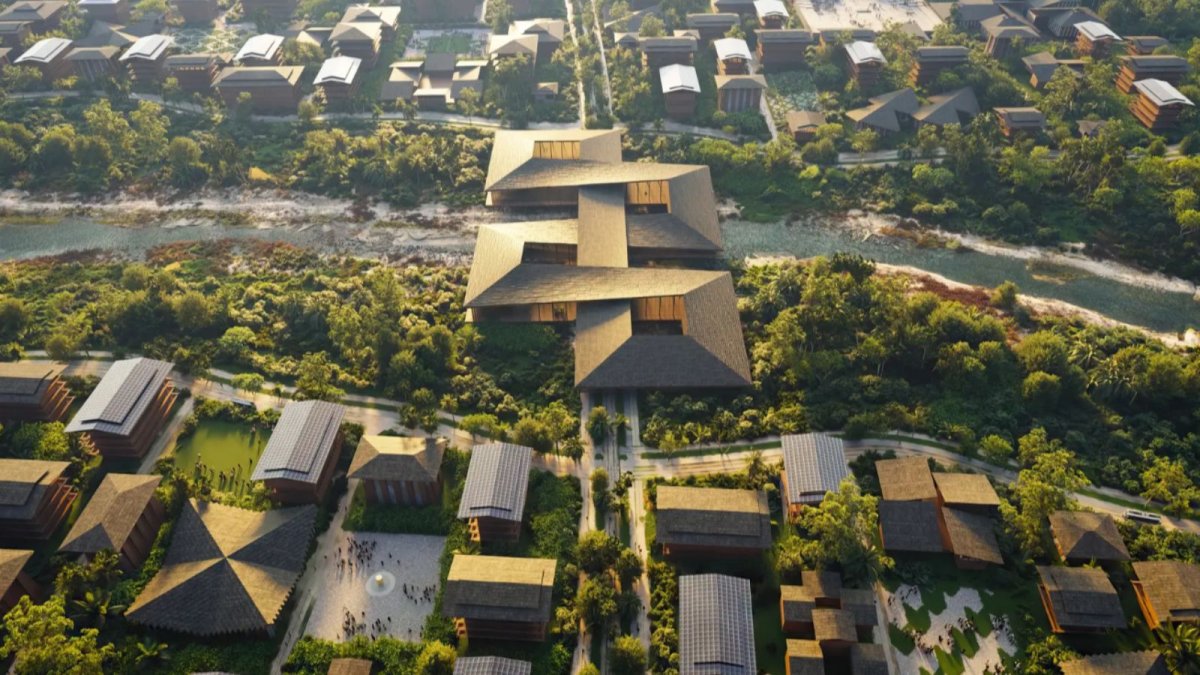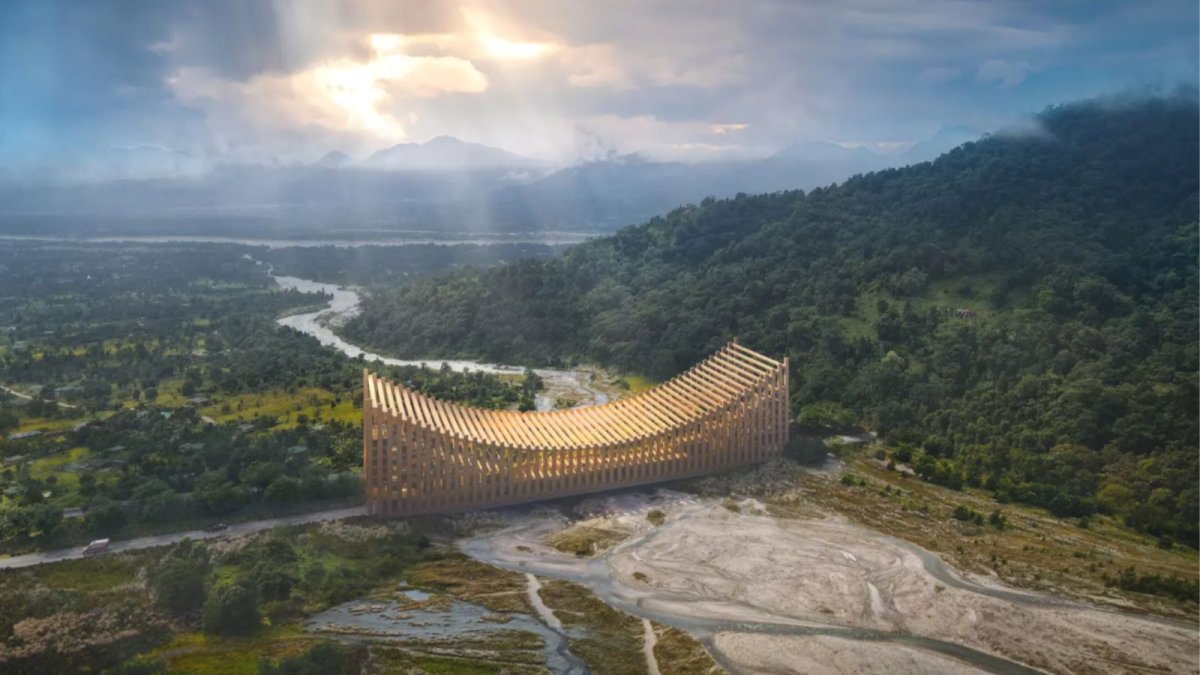The king of Bhutan has a plan to draw young people back to the country: a new city with "mindfulness" at its heart.
Bhutan's younger generation is leaving the country in droves, seeking higher-paying jobs elsewhere. Between July 2023 and 2024, more than 15,000 Bhutanese left the nation on work visas to Australia alone, according to a local news report cited by Al Jazeera.
Bhutan's youth unemployment rate is 29 percent, and the nation's tourist industry, damaged significantly by the pandemic, has yet to recover fully. Nine percent of the population has left in the last few years alone.
King Jigme Khesar Namgyel Wangchuck has plans for a new project in Bhutan, the world's first carbon-negative country, that could stop the country's workforce bleeding.

The city of Gelephu, which sits along Bhutan's southern border with India, will be transformed into a new economic hub for the country. Mindfulness and nature are at the heart of its brief.
"The Gelephu Masterplan" would see the city undergo extensive construction, including building a new hydroelectric dam and an international airport. The city, designed by Bjarke Ingels Group (BIG), has been revealed in new renderings, which show spiritual centers and a hospital designed to be a meeting place between Eastern and Western medicine.
A series of inhabitable bridges will connect the different areas of the city, allowing Gelephu to sit alongside the streams and rivers in the area.

BIG founder and Creative Director Bjarke Ingels said in a statement: "The Gelephu Masterplan gives form to His Majesty's vision to create a city that becomes a cradle for growth and innovation while remaining founded on Bhutanese nature and culture.
"We imagine the Mindfulness City as a place that could be nowhere else. Where nature is enhanced, agriculture is integrated, and tradition is living and breathing, not only preserved but also evolved.
"Shaped by waterways, Gelephu becomes a land of bridges, connecting nature and people, past and future, local and global. Like the traditional Dzongs, these inhabitable bridges turn into cultural landmarks, doubling as transportation infrastructure combined with civic facilities.
"Among these, the Sankosh Temple-Dam embeds the city's fundamental values into a cascading landscape of steps and landings, that like a 21st century Tigers Nest will be a manmade monument to the divine possibility of a sustainable human presence on earth. Turning engineering into art and turning the forces of nature into power."

Do you have a story we should be covering? Do you have any questions about this story? Contact LiveNews@newsweek.com.

















:quality(85):upscale()/2024/04/24/878/n/3019466/36c5693c662965c5d1ce91.72473705_.jpg)


 English (US) ·
English (US) ·